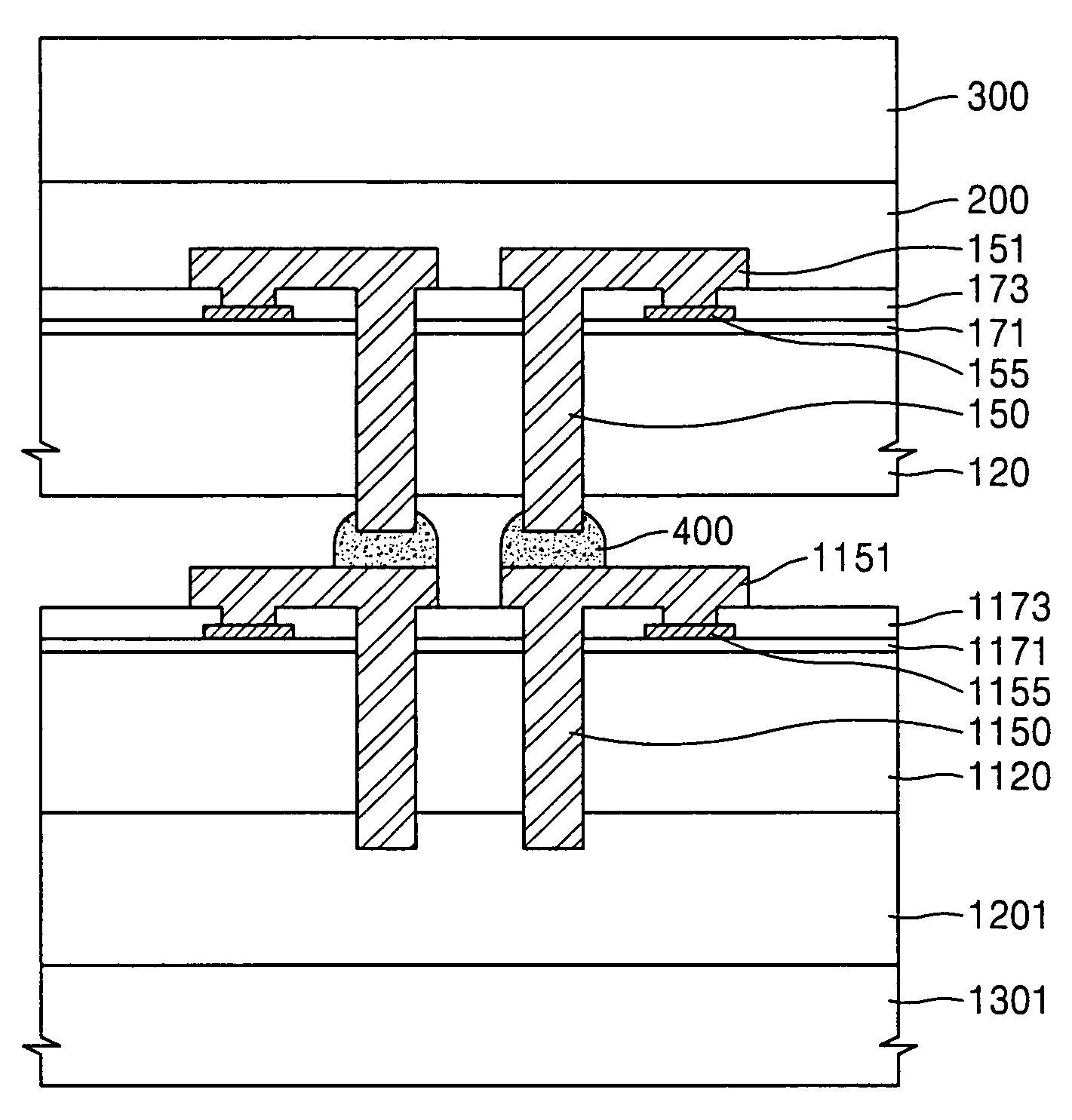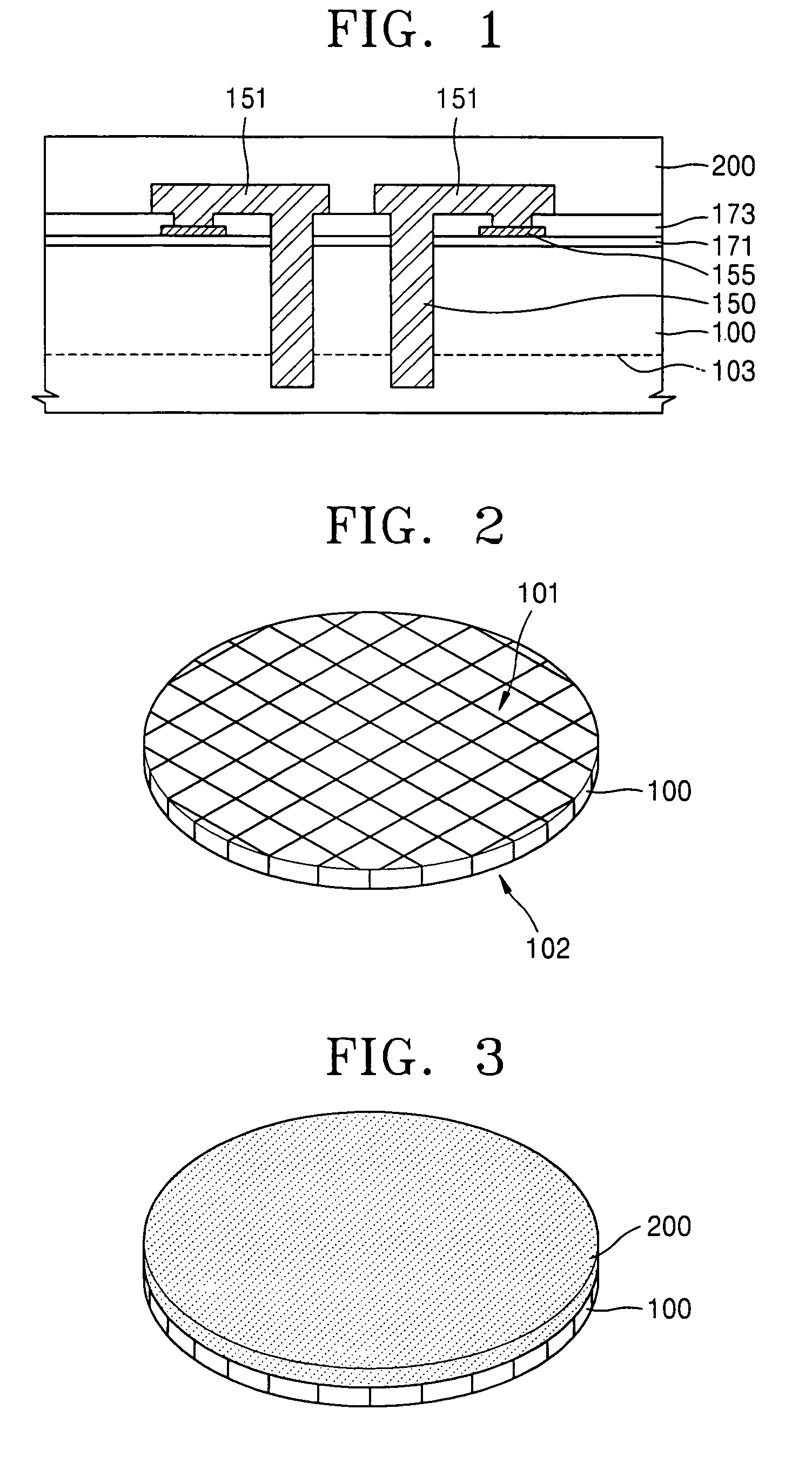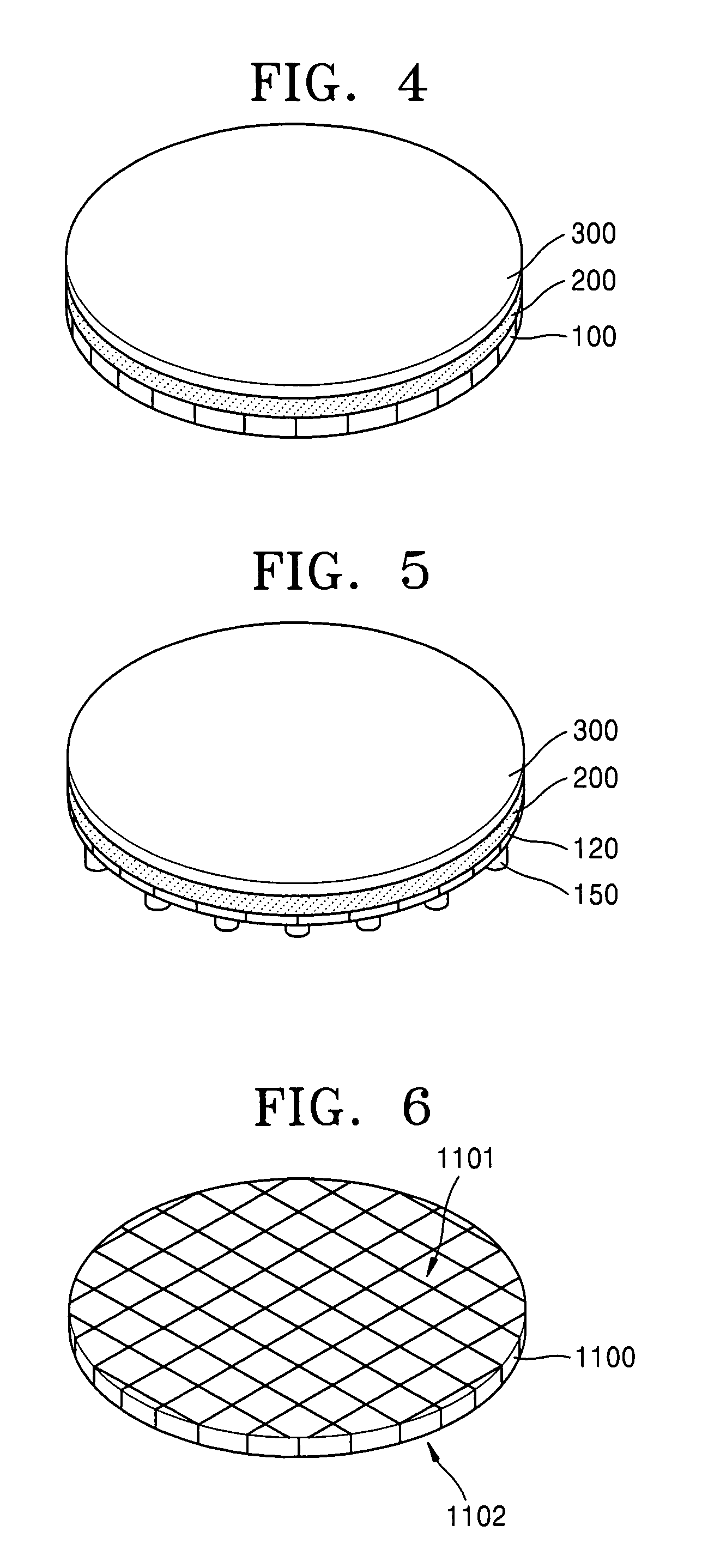Method of forming a thin wafer stack for a wafer level package
a technology of wafer level and stack, which is applied in the direction of semiconductor devices, semiconductor/solid-state device details, electrical devices, etc., can solve the problems of difficult to reduce the thickness of the chip through the wafer thinning process, warped wafers are very difficult to process, and warped wafers tend to crack or break easily, so as to prevent the warping of thin wafers and reduce the thickness of the wafers
- Summary
- Abstract
- Description
- Claims
- Application Information
AI Technical Summary
Benefits of technology
Problems solved by technology
Method used
Image
Examples
Embodiment Construction
[0033]The invention will now be described more fully with reference to the accompanying drawings, in which exemplary embodiments of the invention are shown. The invention may, however, be embodied in many different forms and should not be construed as being limited to the embodiments set forth herein; rather, these embodiments are provided so that this disclosure will be thorough and complete, and will fully convey the concept of the invention to those skilled in the art.
[0034]In order to form a wafer level package, the invention forms a wafer stack in which thin wafers are connected to one another by electrically connecting one or more conductive bumps to one or more corresponding conductive connection pads. Before the wafer with an integrated circuit is stacked, the wafer is thinned by back-grinding and / or etching a back surface thereof to have a small thickness, for example, of only approximately several tens of μm.
[0035]By greatly reducing the wafer's thickness before the wafer ...
PUM
 Login to View More
Login to View More Abstract
Description
Claims
Application Information
 Login to View More
Login to View More - R&D
- Intellectual Property
- Life Sciences
- Materials
- Tech Scout
- Unparalleled Data Quality
- Higher Quality Content
- 60% Fewer Hallucinations
Browse by: Latest US Patents, China's latest patents, Technical Efficacy Thesaurus, Application Domain, Technology Topic, Popular Technical Reports.
© 2025 PatSnap. All rights reserved.Legal|Privacy policy|Modern Slavery Act Transparency Statement|Sitemap|About US| Contact US: help@patsnap.com



